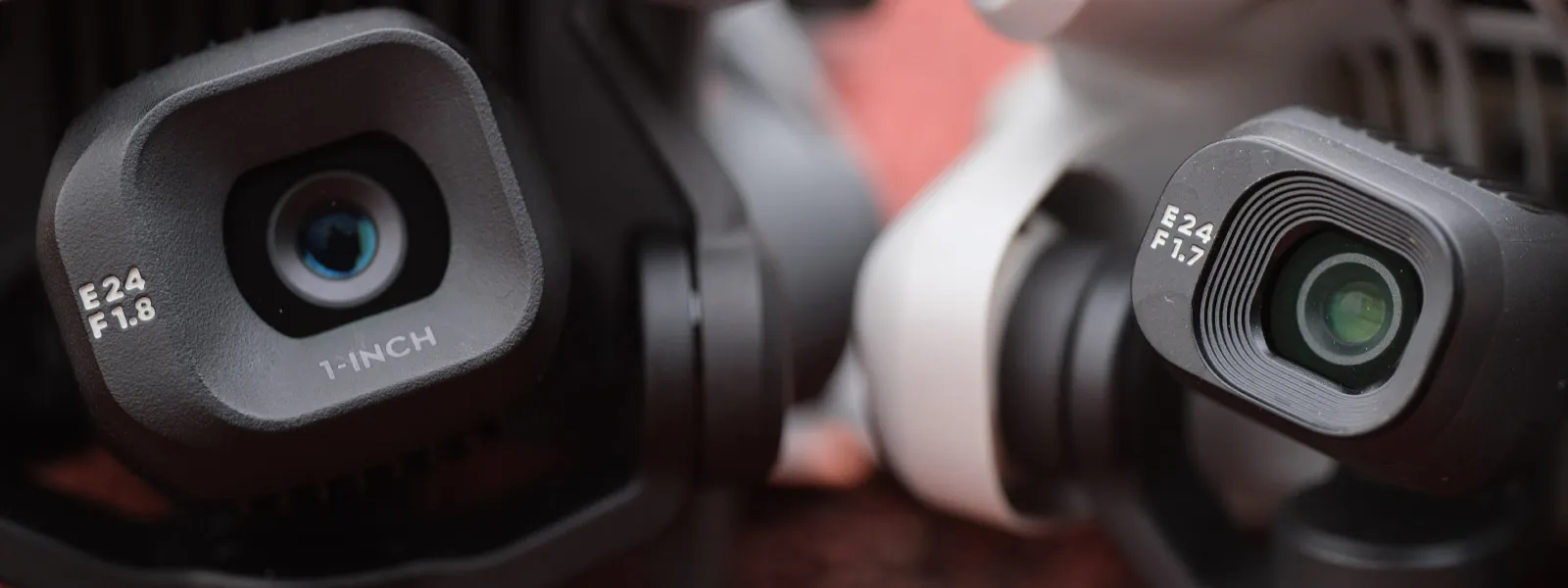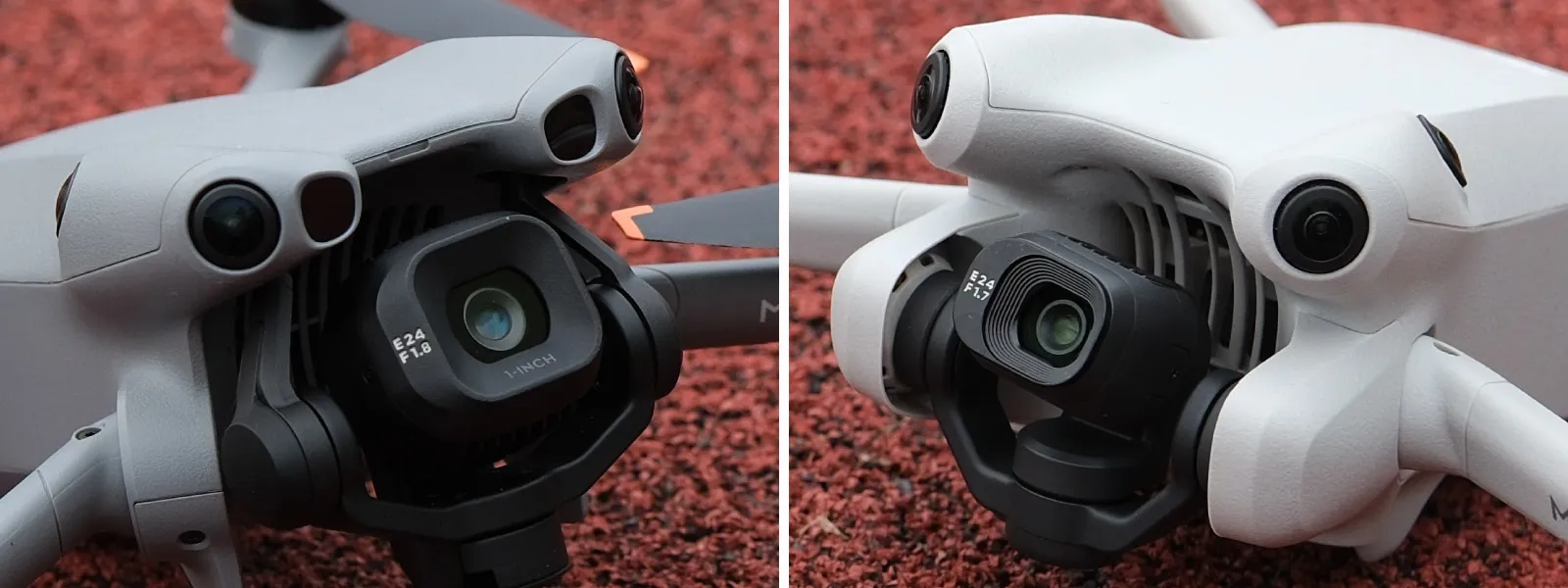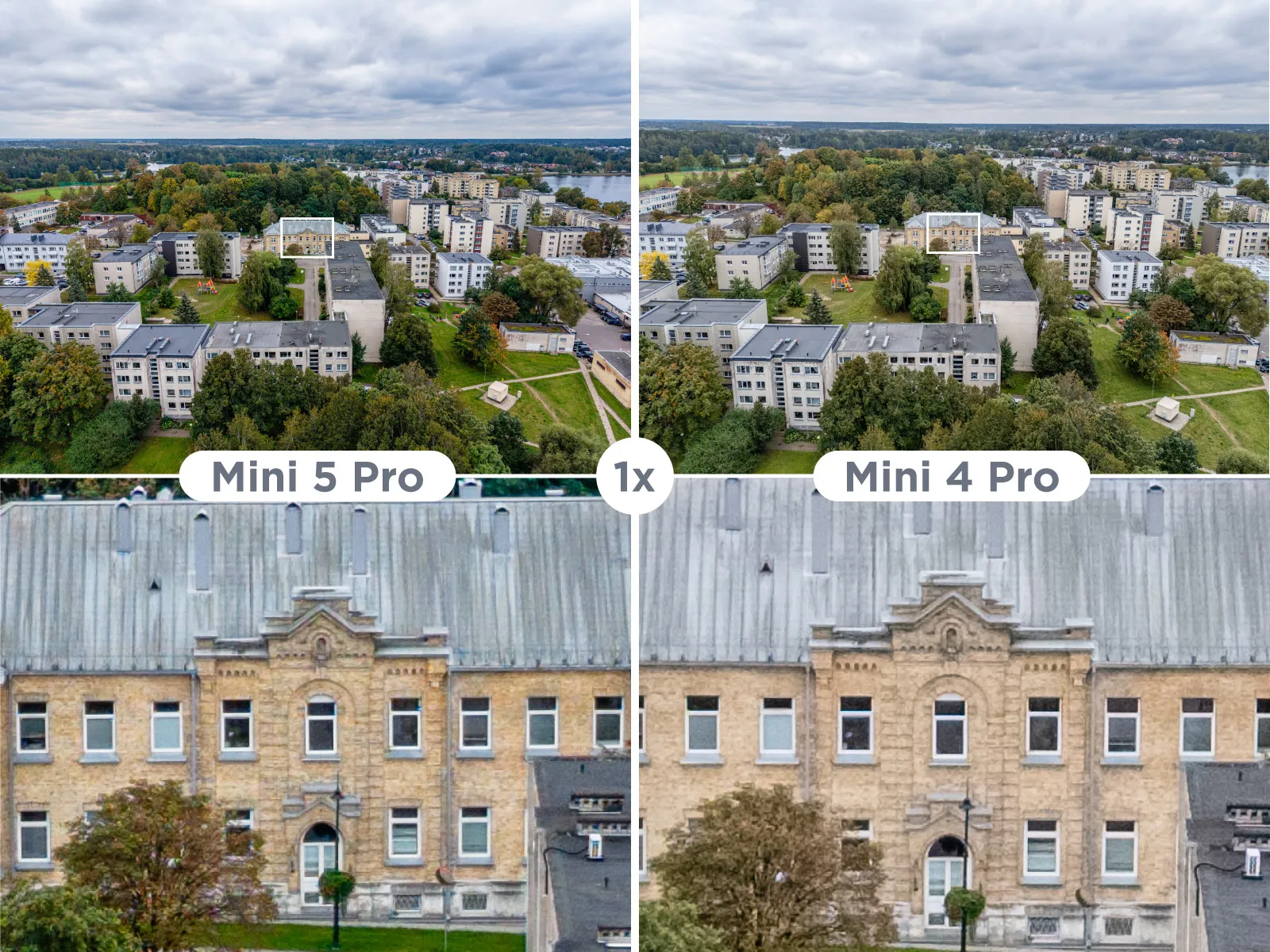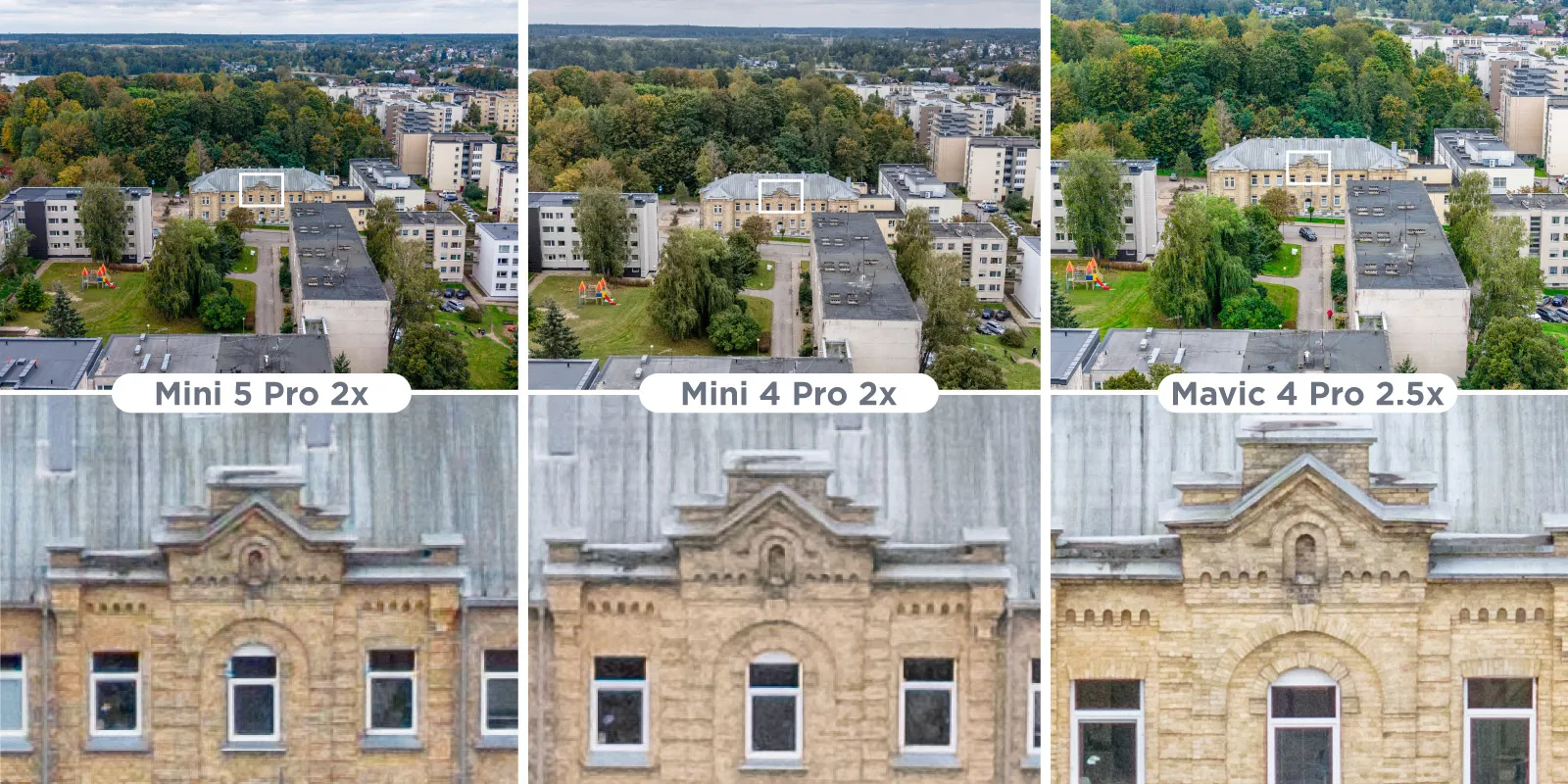DJI Mini 4 Pro vs. DJI Mini 5 Pro – Worthy Upgrade?
 Lukas
Zmejevskis
Lukas
Zmejevskis
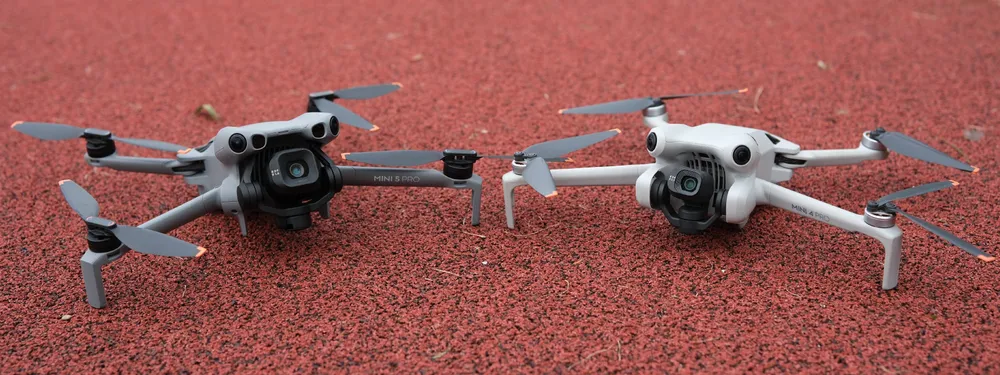
When a new generation of a product is released, we compare it to the previous one to determine if it is a worthy upgrade and what the overall trajectory of the series looks like. DJI's Mini series of drones is the go-to product in its category – an undisputed first choice on the entire market. Since there is currently no real competition, we can only compare DJI drones to one another. In this blog post, I compare the Mini 4 Pro with the DJI Mini 5 Pro, incorporating some examples from the flagship Mavic 4 Pro. I will focus on real-world differences and image quality. On-paper specs are not always indicative of actual improvement or progress.
Key Comparisons in Theory
Camera and Sensor
The Mini 4 Pro features a 1/1.3-inch CMOS sensor capable of capturing 48 MP stills, while the Mini 5 Pro upgrades to a larger 1-inch CMOS sensor with a 50 MP output. Both are quad Bayer arrangements, with 12 megapixels in terms of traditional pixel type. In practice, this means the Mini 5 gathers more light and handles dynamic range better, particularly in low-light conditions. Aperture is fixed on both drones, f/1.7 on the Mini 4 and f/1.8 on the Mini 5. Both offer wide-angle coverage, but the Mini 5 has the advantage in pure sensor performance.
The Mini 4 Pro tops out at ISO 6400 for normal video and ISO 1600 in log/HLG modes. The Mini 5 Pro goes further, supporting ISO 12,800 for standard video and up to ISO 3200 in log/HLG. This effectively means more flexibility in low-light filming, though noise still becomes a limiting factor.
Video Performance
The Mini 4 Pro can record up to 4K at 100 fps. The Mini 5 Pro takes it a step further with 4K resolution at 120 frames per second. Both support 1080p slow motion, but the extra headroom in frame rate gives the Mini 5 Pro an edge for smoother high-frame-rate footage. Color depth is 10-bit on both, with D-Log M and HLG modes available.
Storage and Transmission
The Mini 4 Pro relies mainly on microSD cards with only minimal internal space. The Mini 5 Pro features 42 GB of internal storage, which can save you in cases where you forget to bring a memory card or fill it up. Transmission is also upgraded: the Mini 4 Pro utilizes DJI's O4 system, offering a range of up to 18 km, while the Mini 5 Pro employs the newer O4+ system, extending the range to 20 km with slightly improved stability.
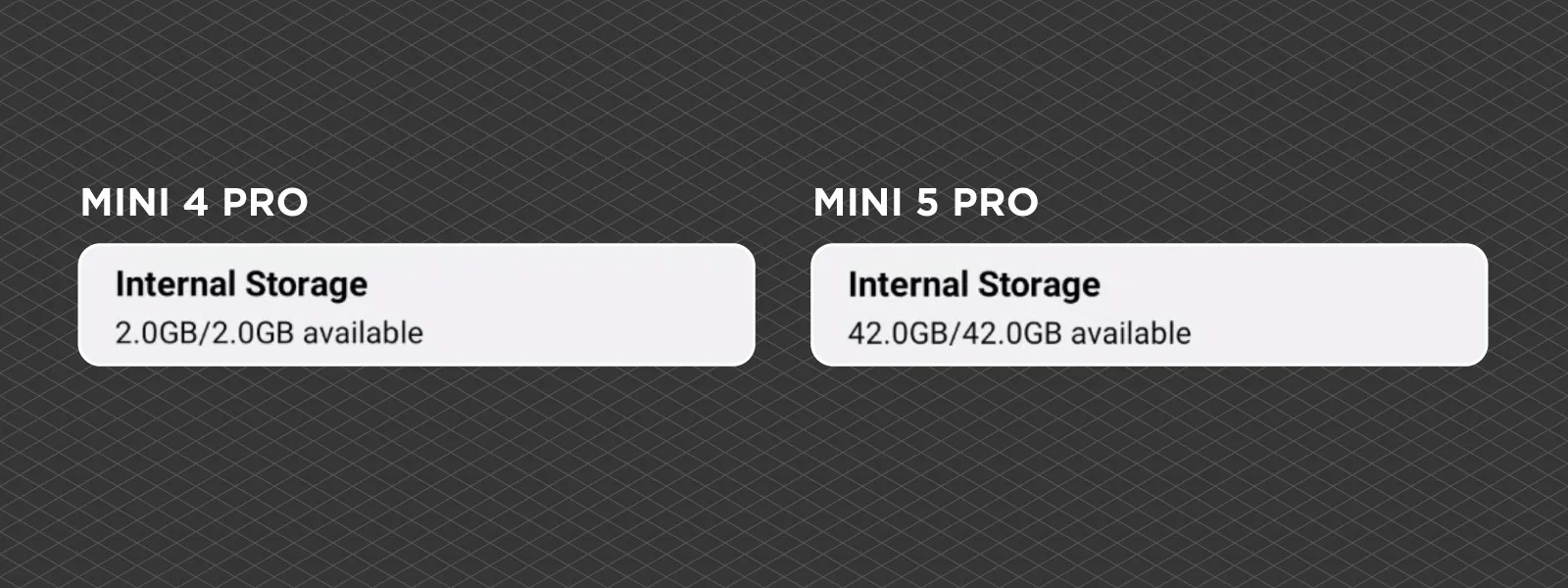 Obstacle Sensing and Safety Features
Obstacle Sensing and Safety Features
Both drones have omnidirectional vision systems. The Mini 5 Pro features a front-facing LiDAR sensor that operates effectively even in low-light conditions. This makes the Mini 5 Pro more dependable when flying in dim environments or near thin obstacles.
The gimbal setup on the Mini 4 Pro is a standard 3-axis stabilizer, while the Mini 5 Pro offers up to 225° of roll rotation, giving more freedom for vertical or creative shots. Flight time is similar in marketing materials — 34 minutes for the Mini 4 Pro and 36 minutes for the Mini 5 Pro — but in reality, both will hover around 25–30 minutes depending on conditions.
Quirks and Behavior
The Mini 4 Pro behaves regularly with its auto exposure and ISO. The Mini 5 Pro has an interesting quirk: using auto ISO can unlock a better dynamic range than fixed values, thanks to its quad-Bayer sensor design. This provides users with another tool to optimize footage quality in high-contrast conditions.
Flight Experience Differences
What follows in this paragraph is my subjective but well-calibrated opinion. The Mini 5 offers a slight improvement on the already excellent Mini 4 Pro. In practice, I noticed the faster climb rate and slightly higher speed of the newer drone. Other than that, there is not much more to say. Smoothness characteristics can be adjusted to your liking on both drones.
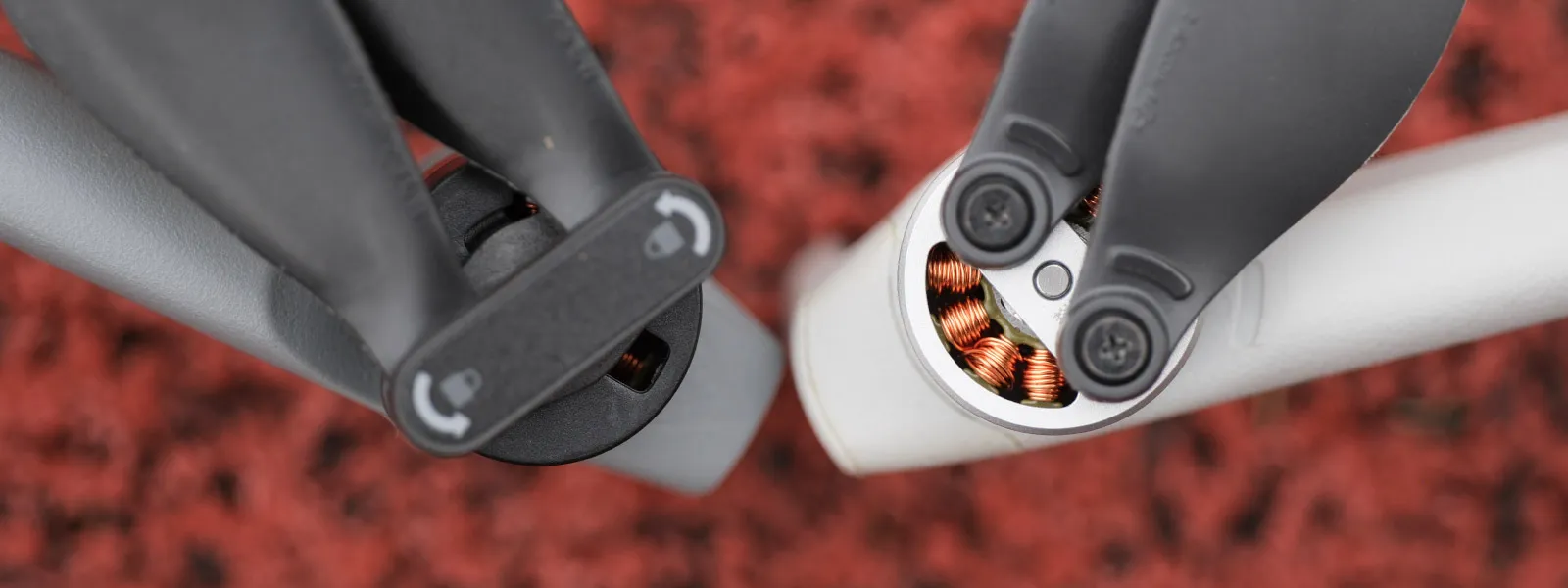 Front LiDAR does improve obstacle avoidance characteristics, especially in low-light conditions. There is a point at which the Mini 4's Pro's obstacle avoidance stops working, while the Mini 5's remains functional in terms of frontal obstacle detection. Finally, the Mini 5's flight duration is more affected by camera status. This means that if you are recording video a lot, the flight time will be noticeably shorter. It is still a good 25+ minutes, though.
Front LiDAR does improve obstacle avoidance characteristics, especially in low-light conditions. There is a point at which the Mini 4's Pro's obstacle avoidance stops working, while the Mini 5's remains functional in terms of frontal obstacle detection. Finally, the Mini 5's flight duration is more affected by camera status. This means that if you are recording video a lot, the flight time will be noticeably shorter. It is still a good 25+ minutes, though.
Image Quality Differences
The Mini 5 Pro's larger sensor means we get an incremental step towards better image quality. Below are some examples, all shot in RAW and in larger resolution modes, processed in Adobe Lightroom Classic with very mild settings.
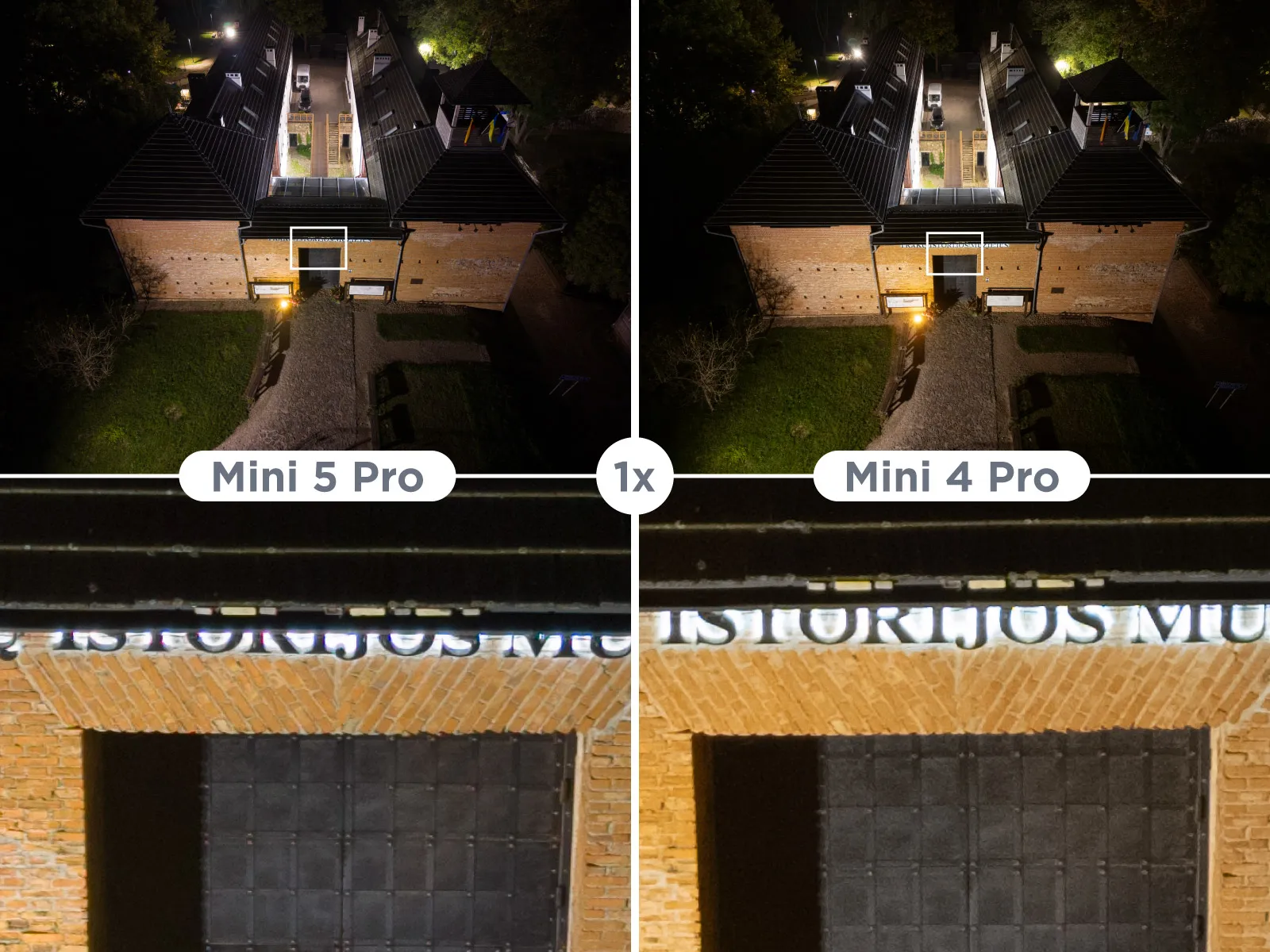 If you shoot photos at 2X, in RAW file format, while set on 12-megapixel resolution, you will get a 2X RAW photo file at 12 megapixels. If you choose the 50-megapixel mode, your RAW files will be 1X, regardless of the zoom level you select during capture. With the Mini 4 Pro, you will always get just the 1X RAW file. Not a significant issue, but something to consider.
If you shoot photos at 2X, in RAW file format, while set on 12-megapixel resolution, you will get a 2X RAW photo file at 12 megapixels. If you choose the 50-megapixel mode, your RAW files will be 1X, regardless of the zoom level you select during capture. With the Mini 4 Pro, you will always get just the 1X RAW file. Not a significant issue, but something to consider.
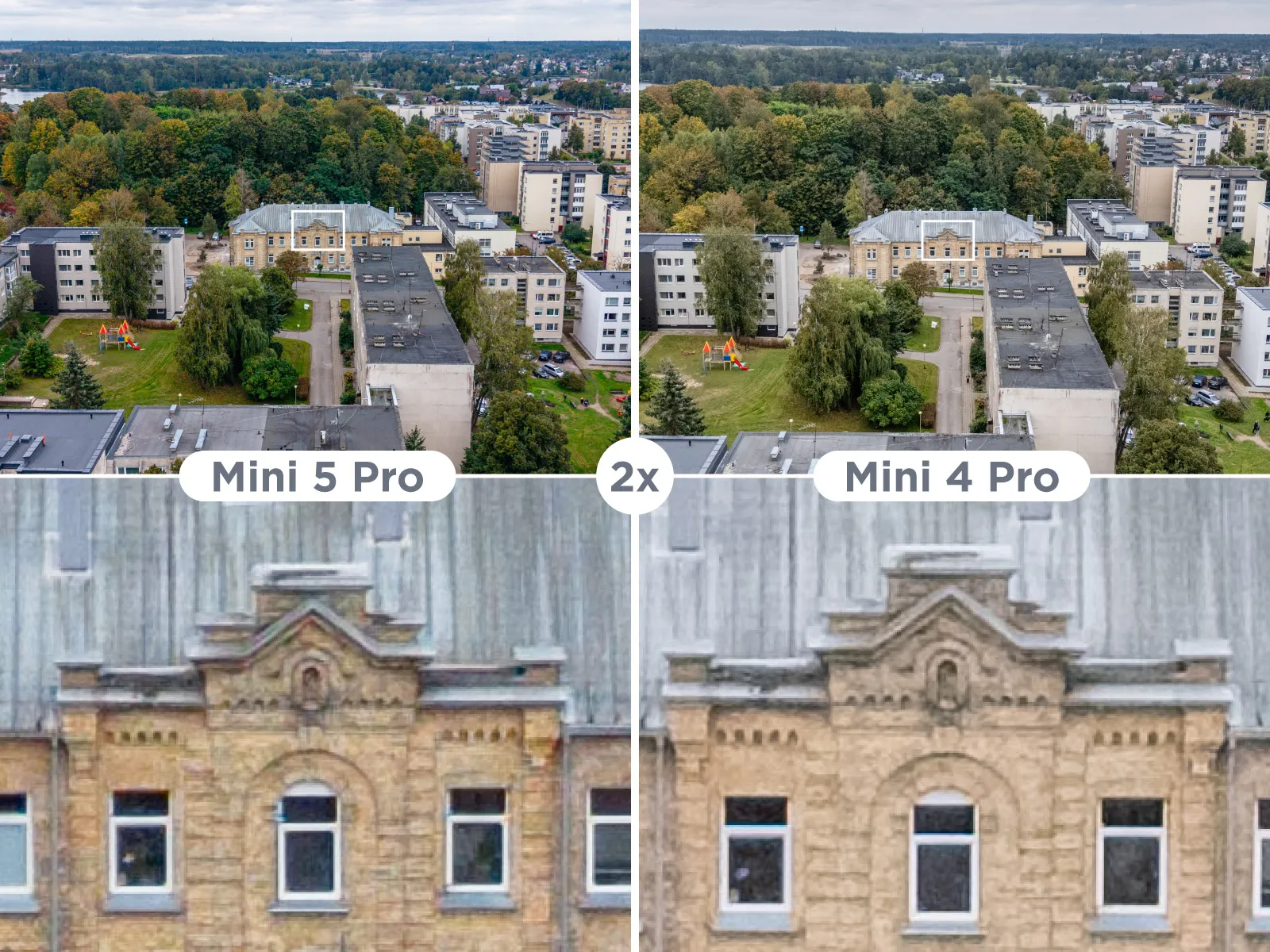 The photo quality difference is negligible. The Mini 5 has a bit less noise and better-controlled chromatic aberrations. It bridges the gap between the Mini 4 Pro and the Mavic 4.
The photo quality difference is negligible. The Mini 5 has a bit less noise and better-controlled chromatic aberrations. It bridges the gap between the Mini 4 Pro and the Mavic 4.
Video Quality Differences
Video quality sees a larger improvement over the Mini 4 Pro. The 2X mode is handy and does provide a substantial improvement when compared to just cropping in post.
Again, the 1-inch type sensor bridges the gap between the Mini 4 Pro and the Mavic 4. However, the steps are really incremental.
Additional Comments
Subject tracking behaves a bit differently. This is a complex topic with numerous variables. Still, when using drones side by side with just minutes between flights, the differences are noticeable. Mini 5 tracking is better overall, but it is tough to quantify. Sometimes, more sensitive tracking can be a hindrance, but this is only the case in particular situations. I can confidently say that tracking at 2X zoom works well and is a highly welcome and valuable addition.
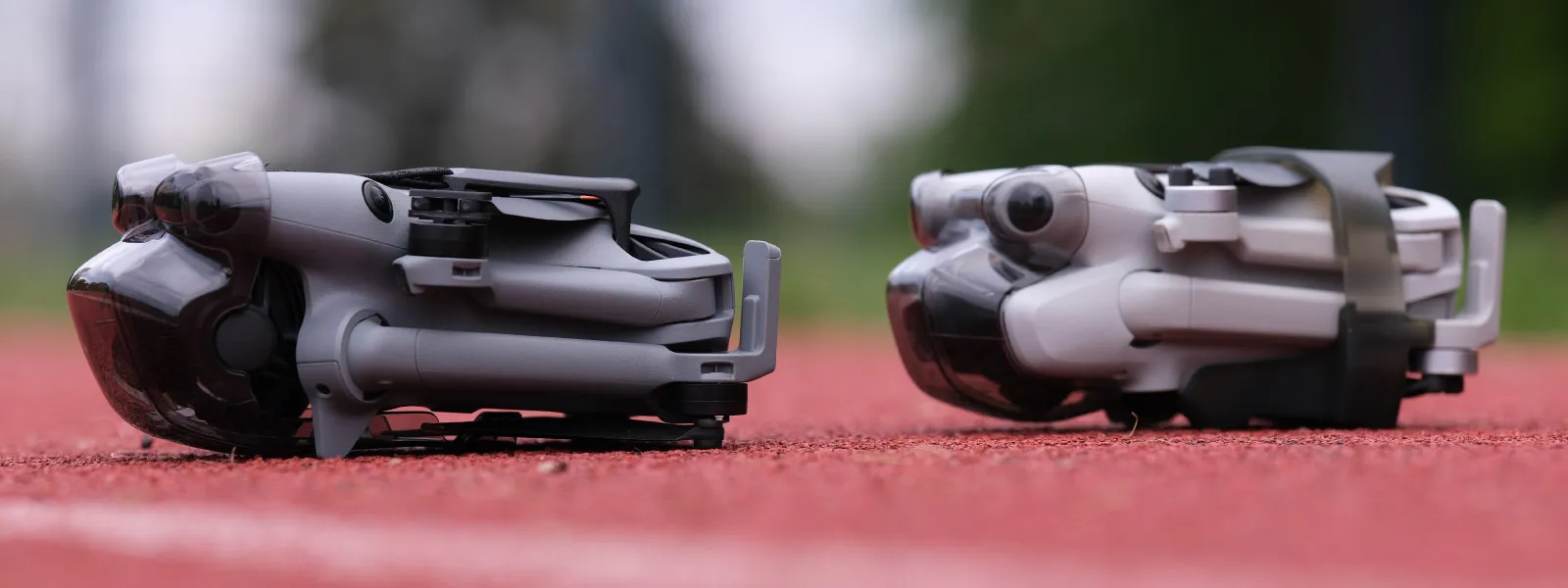 Mini 5 Pro comes with a ridiculously large carrying bag, while the drone itself is just a tad larger. The gimbal protector is nicer, as it eliminates the need to clip the props separately. The gimbal roll range is quite usable; it is possible to capture fun rotation shots, as I did in the previous blog post. It is more usable in practice than the Mavic 4's one due to its different physical gimbal configuration.
Mini 5 Pro comes with a ridiculously large carrying bag, while the drone itself is just a tad larger. The gimbal protector is nicer, as it eliminates the need to clip the props separately. The gimbal roll range is quite usable; it is possible to capture fun rotation shots, as I did in the previous blog post. It is more usable in practice than the Mavic 4's one due to its different physical gimbal configuration.
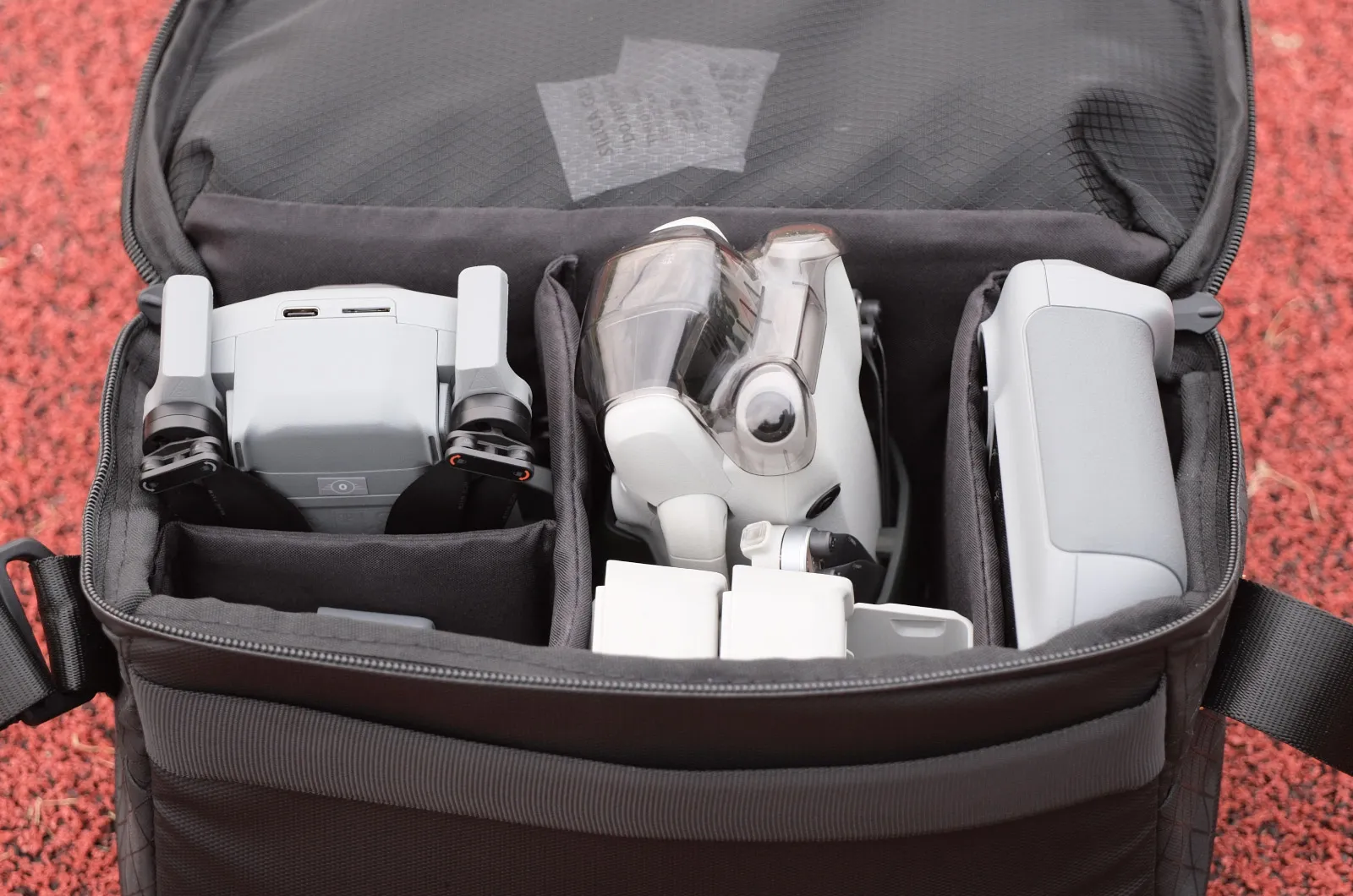 Conclusion
Conclusion
DJI Mini 5 Pro is not a revolutionary leap over the Mini 4 Pro, but it is a very competent evolution. It builds on everything the Mini 4 did well, adds incremental improvements in sensor size, dynamic range, and video capability, and introduces minor but meaningful upgrades such as built-in storage, LiDAR-assisted obstacle sensing, and expanded gimbal roll.
If you already own a Mini 4 Pro and are satisfied with it, the jump to the Mini 5 Pro is more of a refinement than a necessity. However, if you are buying your first sub-250g drone or need every bit of low-light performance and video flexibility in the smallest legal package, the Mini 5 Pro is the best option available today.
In practice, both drones remain industry-leading in their respective classes. The choice comes down to how much the incremental improvements matter to your work. Either way, you are getting a flying camera that is capable, portable, and well-suited for both professional and hobbyist use.

Photographer - Drone Pilot - Photogrammetrist. Years of experience in gathering data for photogrammetry projects, client support and consultations, software testing, and working with development and marketing teams. Feel free to contact me via Pixpro Discord or email (l.zmejevskis@pix-pro.com) if you have any questions about our blog.
Related Blog Posts
Our Related Posts
All of our tools and technologies are designed, modified and updated keeping your needs in mind

Gaussian Splatting vs. Photogrammetry
Every few years, something new shows up online claiming to “revolutionize” 3D reconstruction. A while back it was NeRFs. Now it is Gaussian splatting — with endless YouTube clips of people walking through photorealistic 3D scenes that seem to render instantly.
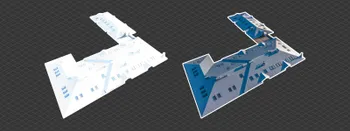
Photo Dynamic Range - Real Life Tests and Advice
Dynamic range is an inescapable term when talking about digital photo or video capture. Our human vision has an incredible ability to adapt, allowing us to perceive both very dark and very bright scenes. When a digital imaging sensor or even a chemical negative captures a scene frozen in time, it is
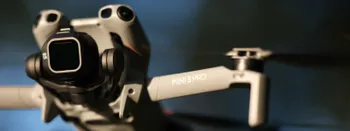
DJI Mini 5 Pro Review – 250* Grams of Flying Tech
DJI Mini drones are by far the most successful product line DJI has ever made. The DJI Mini 5 Pro is the fifth generation, packing all of the latest tech while still (barely) maintaining the 250-gram weight limit, which keeps it in the less regulated C0 class. This means the drone is easily accessib
Ready to get started with your project?
You can choose from our three different plans or ask for a custom solution where you can process as many photos as you like!
Free 14-day trial. Cancel any time.
.svg@webp)
